Built in 1277 by King Edward I, Rhuddlan Castle was erected as a part of the English Conquest of Wales. It is actually an important location for the history of Great Britain: the Statute of Rhuddlan was signed here in 1284, bringing Wales officially under the rule of the English once and for all.
North Wales is famous for its wide selection of castles; the “Big Five” are Beaumaris, Caernarfon, Conwy, Dolbadarn and Dolwyddelan. These are the ones that were originally the most impressive, and for that reason they tend to draw in more visitors than the others. However, this does not mean that the “non-big five” castles do not deserve going out of your way to visit!
We think that Rhuddlan Castle is one of those that is well worth seeing. It is not as well-known as some of the others, but we believe it is just as impressive, in part because the architecture is still so intact. And this may work in your favour –Rhuddlan is less likely to be swarming with other tourists, meaning you can enjoy it at your leisure.
It has seen its fair share of political upheavals, as well. Madog ap Llywelyn’s uprising saw an attack on the castle in 1294, and the year 1400 saw the rebellion of Owain Glyndŵr, the last native Prince of Wales, and his forces. Part of his revolt saw an attack on the town of Rhuddlan, but the castle remained uncaptured.
The castle’s last stand was during the English Civil War. It was garrisoned by Royalist forces who were keeping Rhuddlan for King Charles I, but it was taken during a siege by the Parliamentarians in 1646. After Charles lost power, the Parliamentarians – in an effort to prevent it being used again – set about partially demolishing the fortress. The castle has remained in ruins ever since.
These days, the castle is under the management of Cadw, the Welsh body that oversees the conservation of the building heritage of Wales, meaning it is kept in the best condition and is open to visitors. Rhuddlan Castle is still impressive, with a surprising amount still standing; most significant is the double turreted gatehouse, which casts an imposing shadow over the River Clwyd.
Visitors can see the remaining earthen motte of the castle that stood here before the construction of the current structure, as well as explore the inside of Rhuddlan’s ruins. Entry to the castle is free with a Cadw Explorer Pass.
Rhuddlan is conveniently located for further exploration of Denbighshire and the rest of North Wales. It is only about a mile from the northern coast, and a similar distance from Bodelwyddan and its own castle. The beautiful seaside resort town of Llandudno – and its classic pier – is just a short journey away, so you know where to go if you feel like riding on a donkey or taking in a Punch and Judy show.
Rhuddlan is also only around twenty miles away from the glorious Snowdonia National Park; there is so much to do here that you would need a couple of weeks before you could walk away satisfied! Click here to discover our accommodation in Denbighshire and beyond, and you can be taking in the sights of Rhuddlan Castle and more before you know it.
Location
Car parking is available with one space for the disabled. Acess to the castle from the car park is easy and the area is level and grassed. Refreshments are available. The easiest way to get there is by car on from the A55 coast road and then onto A525 towards Rhyl.
Join the Conversation
Somewhere you've never been? What is Nearby?
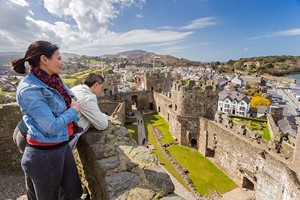 Conwy Castle
Conwy Castle
Conwy Castle is easily the most spectacular of all the castles in North Wales (and cost the most to build, too!). The castle was built for Edward I by Master James of St George, and is one of the most impressive surviving medieval fortifications in Britain.
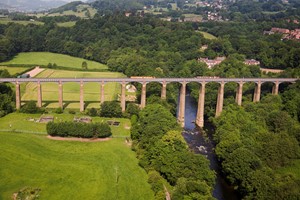 Pontcysyllte
Pontcysyllte
Built by civil engineer Thomas Telford in 1805 to carry the canal across the River Dee, the Pontcysyllte Aqueduct stands at an impressive 38 metres (126 feet) high, making it the highest canal aqueduct ever built.
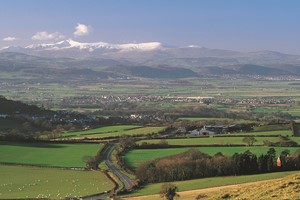 Denbighshire
Denbighshire
The county of Denbighshire in North Wales is a beautiful one, filled with a wide variety of natural wonders, as well as plenty of man-made attractions to boot. Denbighshire sits right at the top of Wales, bordering the Irish Sea, and is so easterly as to come as close as twenty miles to the English border.
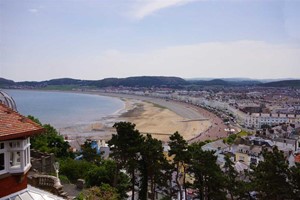 Coastal Resorts
Coastal Resorts
A popular area for holiday makers this has something for everyone - beaches, scenery and plenty of things to do.
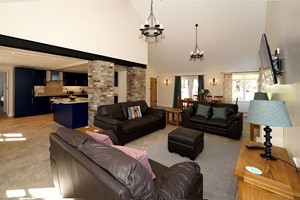 Cottages in Conwy Valley to Chester area
Cottages in Conwy Valley to Chester area
This large area of country side streches from the Conwy Valley towards Chester. Almost entirely countryside, many of the cottages have wonderful views across green fields, hills and woodland. Find something to suit you...
 Cottages in Denbighshire
Cottages in Denbighshire
Find a cottage in the North East of Wales. Home to the Clwydian Range, Llangollen, Ruthin and Denbigh. Find a base to explore this hidden gem of North Wales.




